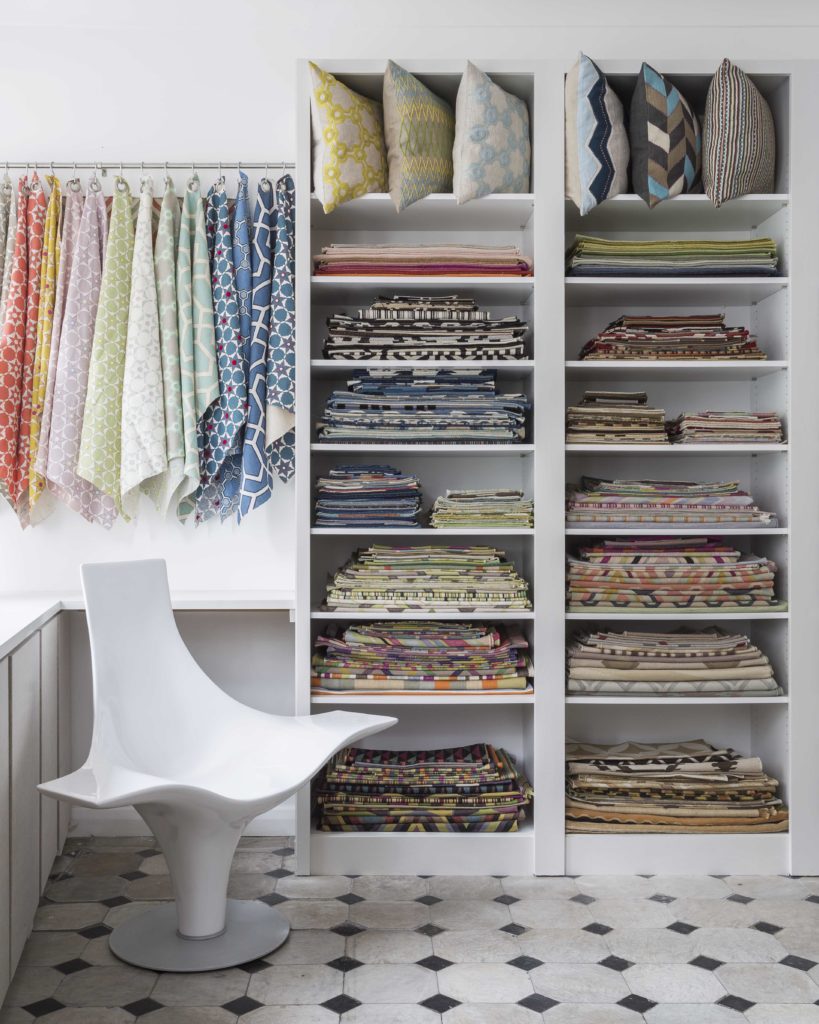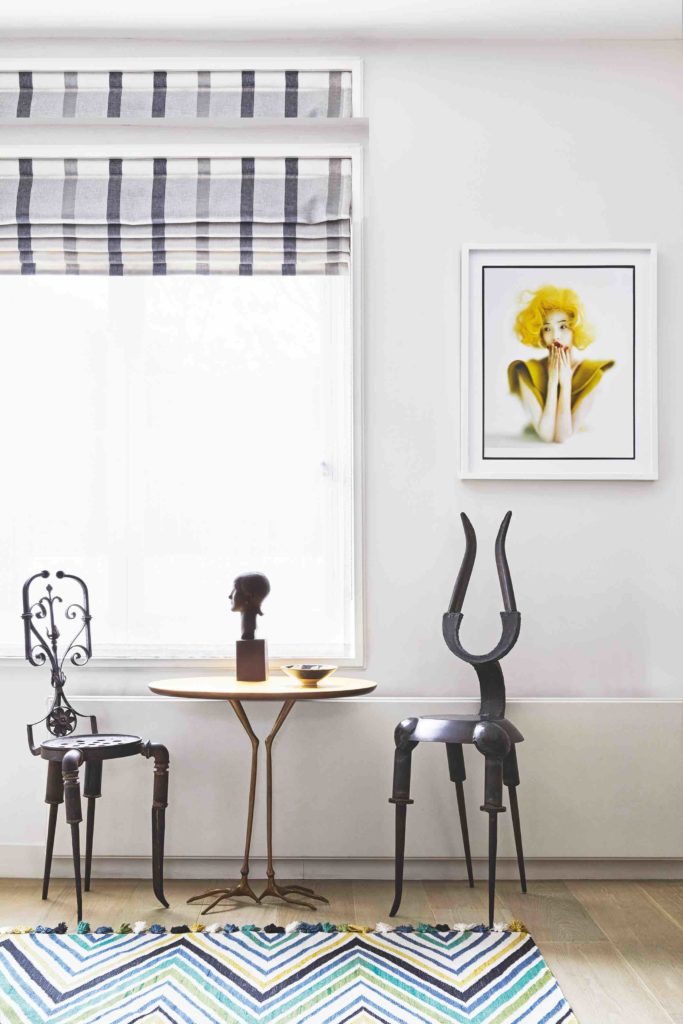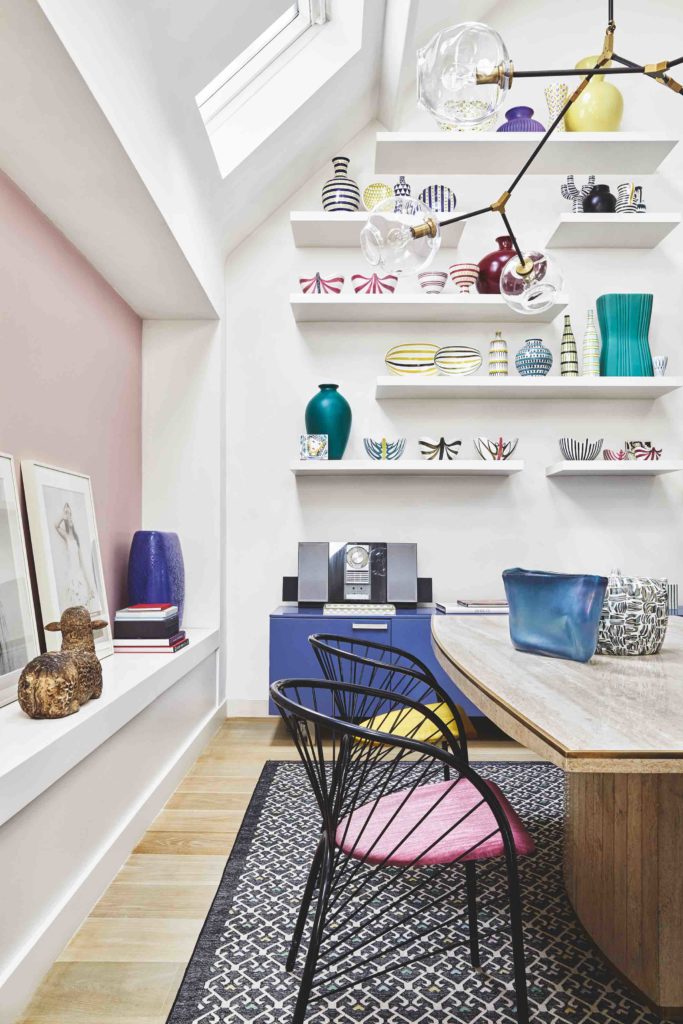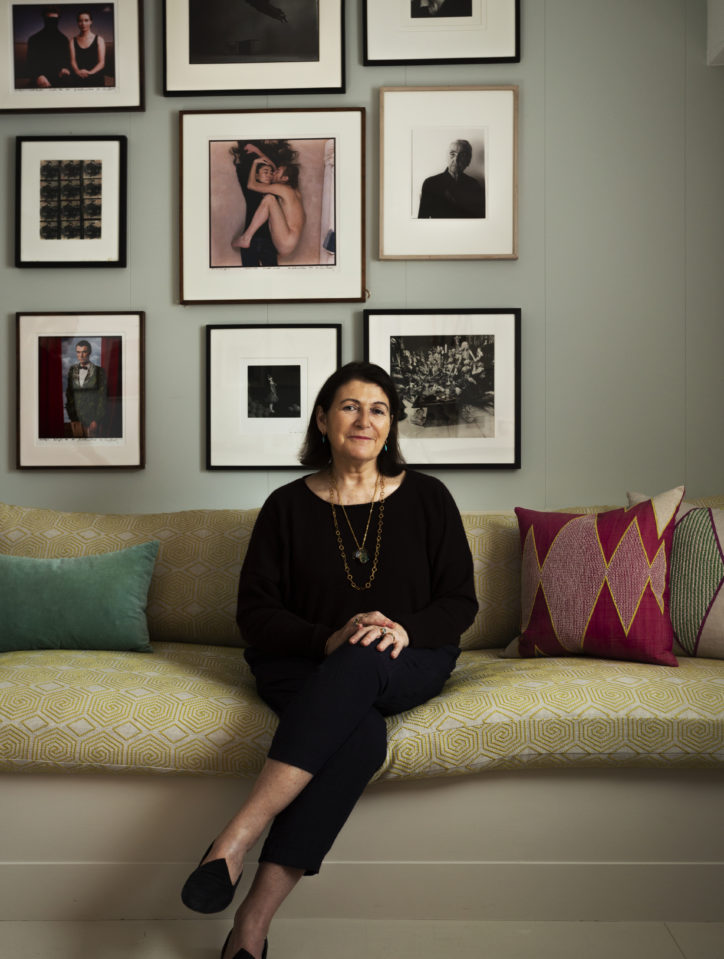If the custom-made textile industry is standing at something of a crossroads, Christine Van Der Hurd has a unique perspective. Having established and developed her 40-year-old business sustaining a network of skilled artisans and weavers based in India and Nepal, in recent years the designer has been forced to focus much of her energy on underpinning an increasingly fragile workforce. Mass production and a throwaway society have weakened both demand and appreciation for exquisitely produced, hand-woven carpets and fabrics.
And yet, at least in the contemporary market, there are signs that tide is starting to turn. With sustainability on the tip of everyone’s tongues, more young textile artisans dedicated to the cause are emerging. Meanwhile curators at some of the world’s most important museums are celebrating textiles as pieces of art, not just decorative items. Combined, it’s pumping oxygen into design studios, inspiring collectors to invest, understand and appreciate the value of the craftsmanship involved.
I’ve found my work to have simplified, leaning more towards interesting textures which are more complicated to achieve and quite often only understood by the more discerning eye – Christine Van Der Hurd

As success stories go, Van Der Hurd’s has something of a ‘Midas touch’ about it. Modestly, she chalks much of it up to being in the right place at the right time: spending her teenage years on London’s Portobello Road then landing in New York and joining its Studio 54 tribe in 1977 (the same year that Bianca Jagger arrived at the nightclub on the back of a white horse). Her career took off and today she’s regarded as a doyenne of textile design.
Born and brought up in London by parents with a distinctive Bohemian tilt, Van Der Hurd’s early eye for quality was honed every Saturday helping out at her father’s gallery on Portobello Road. Geoffrey Van, who was regarded as one of London’s leading dealers, specialised first in porcelain and then European objets d’art and furniture from the 16th to 18th centuries. The timing – it was the mid-60s and Portobello’s star was in ascendence – was perfect and he welcomed an array of stars through his doors from Rudolf Nureyev and Margot Fonteyn to John Schlesinger and Molly Parkin.
Van Der Hurd was sent to school at London’s Lycée. Once she’d mastered the French language and, later, Spanish, she was used as the family interpreter as her parents travelled through Europe in search of items for the shop. “My father would stop off at flea markets – the Marché aux Puces in Paris, or El Rastro in Madrid – and I was the chief translator,” she says.
While being surrounded by Verdure tapestries and French brocades was one influential aspect, what really ignited her interest in colour and fabric was her mother. A talented seamstress, she made her own evening gowns using exquisite fabrics. “I have clear recollections of shopping with her among the wonderful bolts at Liberty’s and going to Radnor Walk to awe at Celia Birtwell’s delicately-printed whimsical designs for Ossie Clark,” says Van Der Hurd. “I knew very early on that I wanted to be in the fabric world, but I had no idea it would lead me into designing and manufacturing bespoke carpets.”

Encouraged to pursue these interests by her parents, Van Der Hurd studied textiles at Winchester School of Art, specialising in print for fashion. Even before she had finished, she started showing some of her designs to the likes of Biba. Soon after graduating, Christine set off, clutching her portfolio under an arm, for Milan and Paris. Her tenacity was quickly awarded commissions from some of the leading fashion houses including Yves Saint Laurent, Cacharel and Mary Quant. “I was quite shy but strong-willed and fuelled by advice from my mother who had always taught me to be independent and never rely on a man,” she reflects.
This early success was turbo-charged when Van Der Hurd moved to New York in 1977. During her first selling trip to the city, she fell in love – with Manhattan and her future husband, David Hurd. “I was blown away with New York which was in full Studio 54 mode and filled with artists, designers and photographers including Robert Mapplethorpe, Annie Leibovitz and Andy Warhol,” she says.
Van Der Hurd’s first commission in New York, designing fabrics and prints for Angelo Donghia, marked her transfer from fashion to interiors. She and David opened a gallery, Modernage, on Broadway importing Art Deco furniture from Europe, some of which Christine would have re-lacquered in vibrant red and turquoise. It was almost an instant success, attracting uptown designers to see what ‘those young Brits’ were up to in downtown Manhattan.
In 1981, the couple changed direction and moved into contemporary – a pivotal decision in the birth of Vanderhurd. They had already started to bring in furniture by young British designers such as Tom Dixon and Ron Arad but Van Der Hurd quickly found that none of these pieces sat well against their collection of older rugs. So, she set about designing something more suitable.
While her fashion designs were colourful, detailed and often floral, Van Der Hurd’s carpets were bold and graphic in their geometry from the start. She took early design inspiration from Constructivist paintings as well as Modernist artists such as Ben Nicholson. A Bauhaus exhibition at the Royal College of Art (RCA) was particularly influential.
“My first commission was for Martha Fellows whose architectural practice (MC2) came into the gallery, saw my designs and commissioned two rugs for the directors’ headquarters at Harcourt Brace Jovanovich in Florida,” explains Van Der Hurd.

It set in place a successful career as a leading designer whose signature approach revolves around the simplicity of pattern with a twist, and always unexpected colour. “It’s been a long career and as I’ve progressed, I’ve found my work to have simplified leaning more towards interesting textures which are more complicated to achieve and quite often only understood by the more discerning eye,” she reflects.
Inspiration rarely comes from another fabric. Instead, it might be a painting in the MOMA or interesting detailing on the façade of a building. Vanderhurd designs are all bespoke but there have been a number of highlights including creating Modernist rugs for a Richard Neutra house in LA, designing rugs for Henri Bendel’s flagship store to working with Beyer Blinder Belle on a home in Lake Minnetonka, Minnesota.
With no sign of slowing down, current commissions continue to take Van Der Hurd around the globe: she’s currently working on a hand-embroidered 4m wall for a master bedroom in a Brooklyn townhouse and alongside a project with Thorp Design on a house in Lake Como.
None of this would be possible without her team of craftsmen and women whom her firm has committed to supporting throughout the pandemic. “Thankfully there are enough people who understand the aesthetic value of a beautifully made carpet,” says Van Der Hurd. “These contemporary woven carpets, just as antique oriental carpets have been in the past, will become heirlooms in the future.”
Effect Magazine is brought to you by Effetto



